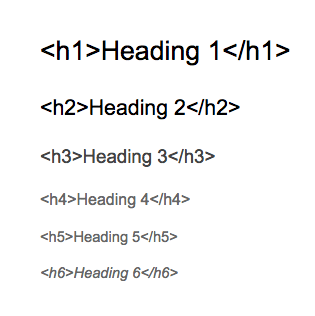What is a Heading Tag? Why is it Important for SEO?
A heading tag is an HTML element that defines the structure of a web page’s content. Its main function is to divide the content into smaller sections and tell both users and search engines about the importance of each section of information.

Why are heading tags important for SEO?
- Tell Google what your content is about: When Google bots scan your website, heading tags help Google understand exactly what the page is about and what the main topics are.
- Create a clear content structure: Heading tags help create a structured content structure that makes it easier for users to understand the content and helps Google better understand the relationships between topics.
- Improve keyword rankings: Including your desired keywords in your heading tags increases the chances that your page will rank for those keywords in search results.
- Improve user experience: Heading tags help users quickly scan the content on your page and find the information they’re looking for.
Types of Heading tags
Heading tags come in different levels. The most commonly used are H1, H2, H3, H4, H5, and H6. H1 is the most important and H6 is the least important.
- H1: Used for the main topic of the website page. There should be only one per page.
- H2: Used for sub-topic headings of the website page.
- H3: Used for sub-topic headings.
- H4, H5, H6: Used for sub-topic headings.
How to use Heading tags effectively
- Use Heading tags according to the priority: Heading tags should be used according to the importance of the topic, starting with H1, then H2, H3, and so on.
- Include relevant keywords: Include keywords that you want to rank for in the Heading tag, but make sure to use them naturally and not too repetitive.
- Use Heading tags appropriately for the content: Choose Heading tags that are appropriate for the length and importance of each section of content.
- Don’t forget other Heading tags: In addition to Heading tags, there are other important elements such as Title tag, Meta description, and Alt text that you should pay attention to.

Example of using Heading tag
HTML
<h1>How to SEO your website to rank number 1 in Google</h1>
<h2>1. Find relevant keywords</h2>
<h3>1.1 Use Keyword Planner</h3>
<h3>1.2 Analyze competitors</h3>
<h2>2. Create quality content</h2>
<h3>2.1 Write interesting and useful content</h3>
<h3>2.2 Add images and videos</h3Heading tag precautions
- Don’t overuse heading tags: Overusing heading tags can mess up your content structure and can confuse Google.
- Don’t use heading tags solely for keyword ranking: Focusing solely on using heading tags for keyword ranking can lead to neglecting other important SEO elements.
- Update heading tags regularly: Heading tags should be reviewed and updated regularly to keep them in line with Google’s content and algorithm changes.
Summary
Heading tags are a very important element for SEO. Using heading tags correctly and effectively will help Google better understand your content and increase the chances of your website being ranked in search results.


